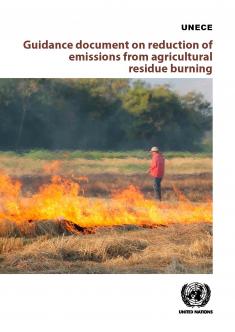Agricultural residue burning is a challenge in many countries in the ECE region, as well as at the global level. Substantial and clear evidence exists that fire use has negative impact on soil organic matter by reducing soil fertility and ultimately reducing yields. Moreover, the emissions generated by agricultural residue burning contribute to air pollution and are important drivers of climate change, with harmful effects on both human health and the environment at the global level. The implementation of the practices, methods, approaches, and technical instruments described in the present guidance may significantly contribute to reducing air pollution from residue burning in agriculture and its negative impact within the ECE region and beyond.
The Executive Body for the UNECE Air Convention has adopted this guidance document, developed by the Task Force on Techno-economic Issues in cooperation with the International Cryosphere Climate Initiative and the Task Force on Reactive Nitrogen at its forty-first session in December 2021.
